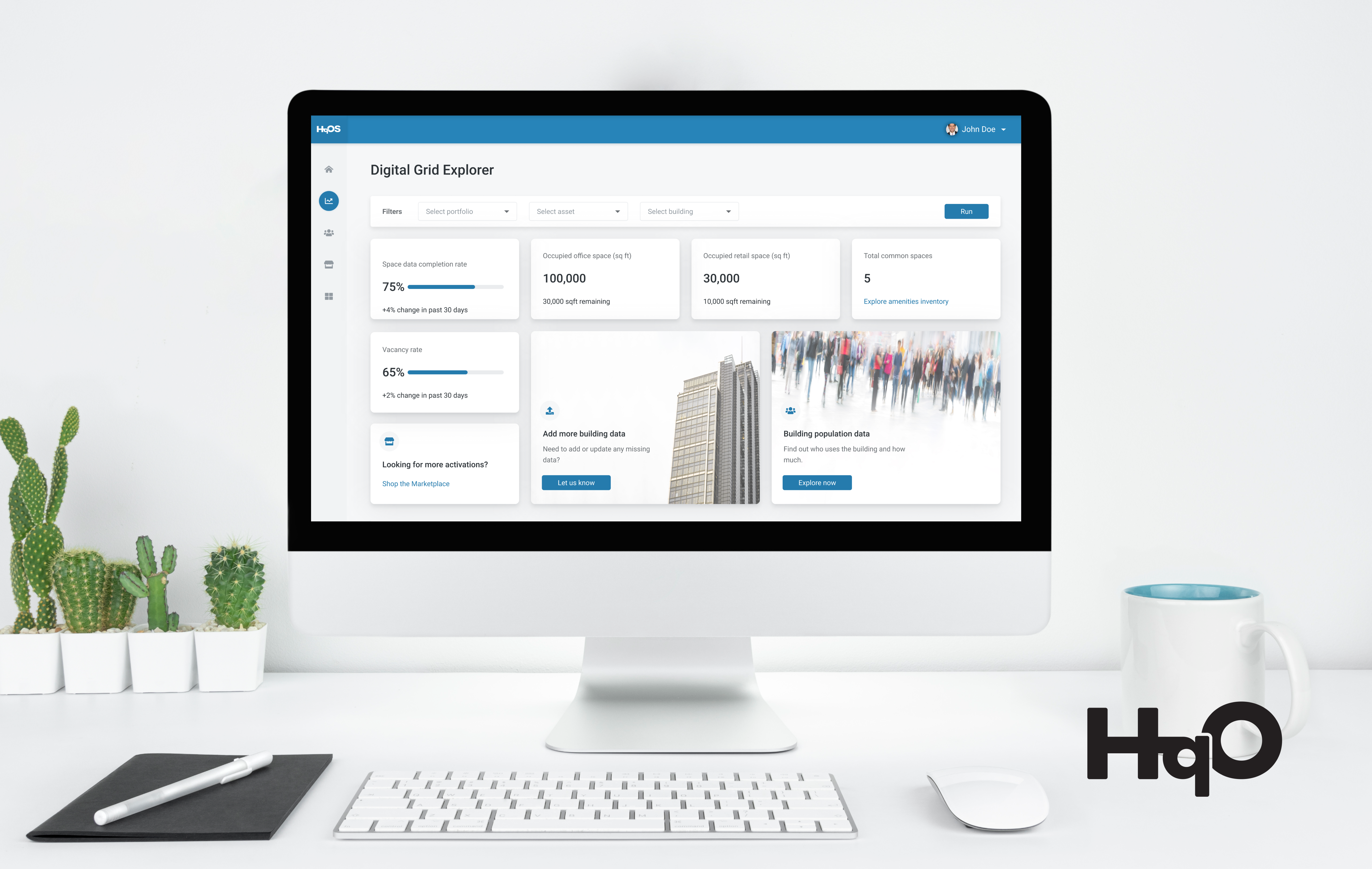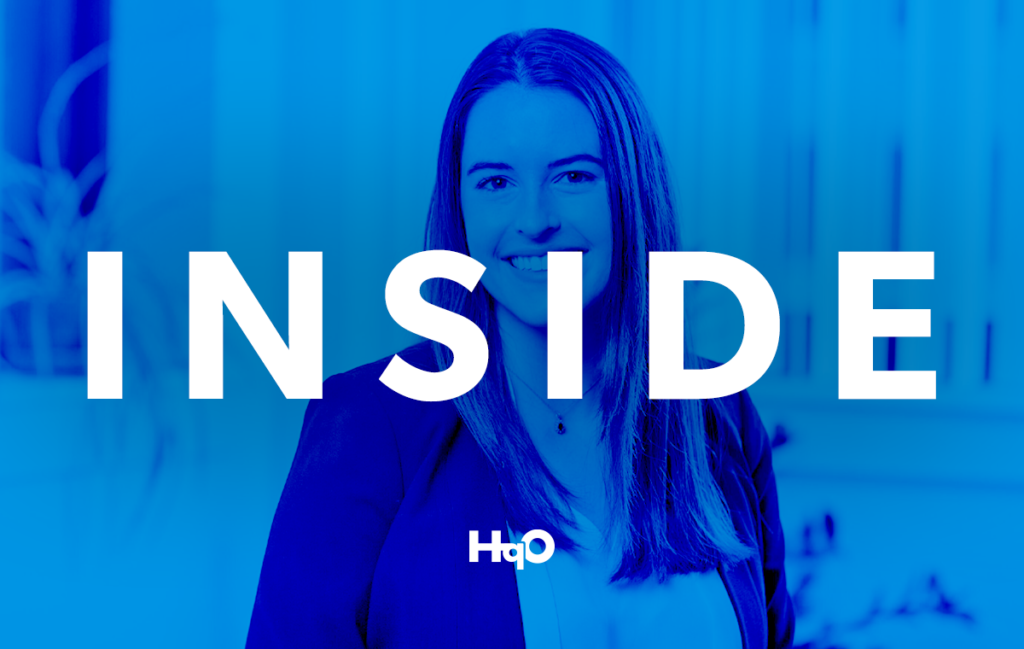Benchmarking — or the process of comparing your business’ data and results with those of your industry peers to increase performance — is nothing new. We’ve seen this in a multitude of ways in the real world: sports teams and players are compared to determine top performers and predict seasonal outcomes; consumer marketing teams benchmark customer satisfaction metrics against competitors to enhance products and services; cities even collate initiatives such as sustainability efforts to determine where they stand, and to bring to light necessary areas of improvement.
With rapid changes to the commercial real estate (CRE) industry and the recent digitization of office buildings, gathering and benchmarking data about your portfolio is more important than it’s ever been. In order to truly generate value for your buildings — for both the short- and long-terms — you need to learn more about your end-users. Thus, adopting data-driven decision making practices helps you stay informed of and adaptable to evolving tenant needs. Fortunately, the technology already exists that can help property teams with these obstacles; through the HqOS Digital Grid™, you can collect, compare, and leverage meaningful insights about your buildings. As the market continues to transform, are you making sure you’re “on the Grid”?
Changes in Data Needs
The more property teams begin to embrace digitization and activate their office building features, the more data they receive — which, in turn, means the more they will need to know the differences between good data and bad data. For example, vanity metrics are metrics that only measure surface-level digital engagement, such as content clicks within an app. Though content clicks may display interest in a certain amenity or article of building-related information, they can’t tell you about the tenants’ actual experience with your building.
Without realizing it, landlords commonly invest in technologies that only provide vanity metrics, instead of the quality metrics they need to understand their building occupants. In order to truly unlock actionable data and insights that go beyond the surface-level, you will need to start collecting more granular data from a variety of sources that speak to both the digital and physical office experiences — such as mobile access data, space sensor data, and event attendance.
This requires a single platform with rich, API-based integrations that tie together all aspects of the tenant experience. Without these deep integrations, the technology trail ends abruptly, leaving property owners with no additional information that they can apply to their assets. This is why true API-based integrations — which can be found in HqO’s growing technology ecosystem — are so important. These technology connectors go beyond the initial click, capturing significantly more data because they’re both native and trackable.
Why Benchmark Your Buildings?
Many landlords strive for best-in-class experiences for their tenants. To achieve this, they need to compare all of their portfolio’s features with their competitors, so they can tout their competitive edge and make the necessary changes that will keep them ahead of the curve. Today, most landlords do this anecdotally — they discover and share select information with their professional networks, hear others’ customer success (or failure) stories, and learn from leasing tours.
When depending on information based on hearsay and spread across the internet, it can be hard to determine what another building — and sometimes even what one’s own building — truly has to offer. It’s even more difficult to find detailed information that can drive asset-related decisions. A landlord knowing they have more of a certain program than their competitors is a good starting point, but it is not enough information to create action-items for their building.
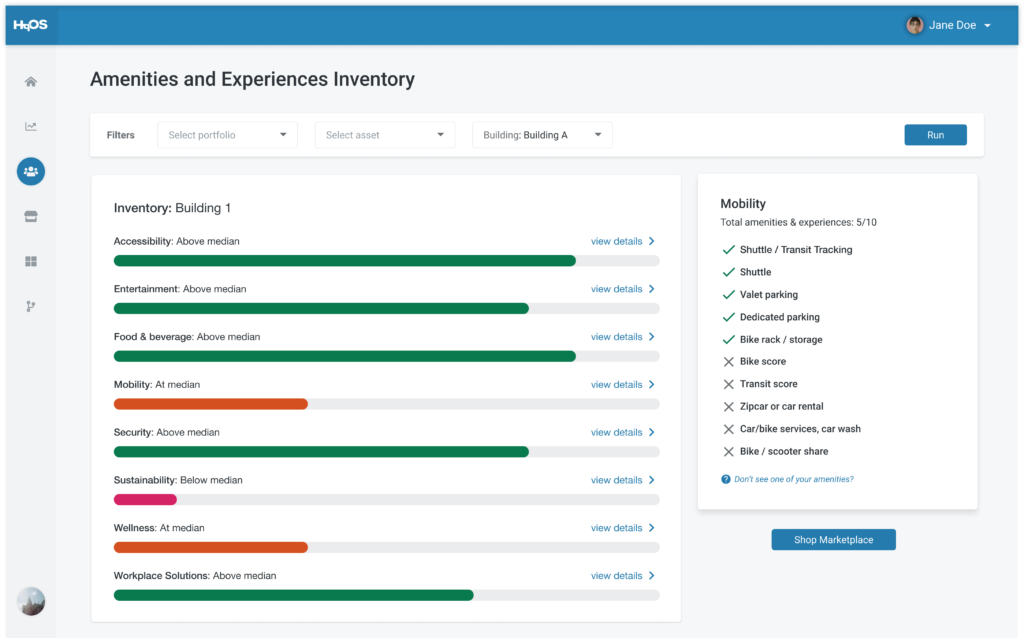
For example, if a landlord wanted to truly evaluate their wellness offerings, they would require additional related benchmarking information across their building, portfolio, and region. This may include:
- A breakdown of all physical and digital offerings, such as a gym space, class registration, online wellness streaming for tenants working at home, etc.
- The categories of offerings, such as fitness classes, beauty services, and health services.
- The size and quantity of building offerings. This may include the square footage of the gym, the number of wellness deals offered to tenants or the number of classes available online and in-person.
- The rate of engagement with these offerings, like the number of mobile access scans for physical space usage, number of in-person fitness classes booked and attended, and more.
- Tenant satisfaction with these wellness offerings.
- Building certifications and awards that have wellness-focused criteria, like WELL and Fitwel.
Finer details about all aspects of your building and tenant population can resolve three major business issues for CRE: attraction, fragmentation, and differentiation. For attraction, this may include successfully navigating leasing or renewal conversations, tenant relationship management, and creating comparisons against your biggest competitors. For fragmentation, benchmarking allows you to see how certain technology drives business outcomes, and to grade your building’s performance. For differentiation, data can help make strategic decisions on building improvements, while also leveraging this information to inform overall asset valuation. Benchmarking has even been able to help facilitate safe return to workplace strategies in the wake of the COVID-19 pandemic, as more landlords strive to provide the safest work solutions for tenants and their employees.
Leveraging an Art and Science Approach
With a general lack of data and so many potential data points out there for office buildings and tenant experience, CRE property teams require the right technology and analytics expertise to achieve their most pressing business goals. First and foremost, they need a single source of truth. This means landlords require a CRE-specific data model that can help aggregate insights across your portfolio’s people, spaces, and technologies — such as tenant data, amenities and experiences data, building spaces and floors data, and building system/IoT device data — all in one place.
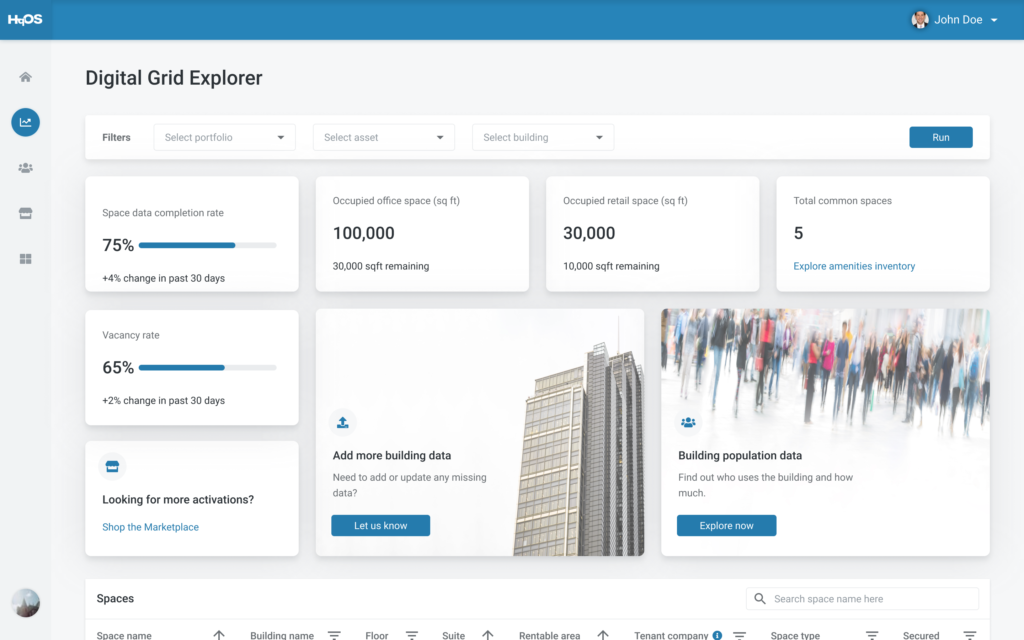
Having a connected and streamlined analytics offering like the HqOS Digital Grid — which collects tenant behavior, amenities, technologies, and building data all in one place — helps owners and operators uncover insights, take action to differentiate their assets, and make intelligent decisions across their portfolio. It can even give landlords a better understanding of their tenants through “connection scores,” which increase the more tenants interact with activated building features. In order to quickly access a consolidated view of the metrics that really matter, CRE needs end-to-end solutions that can achieve the above and more.
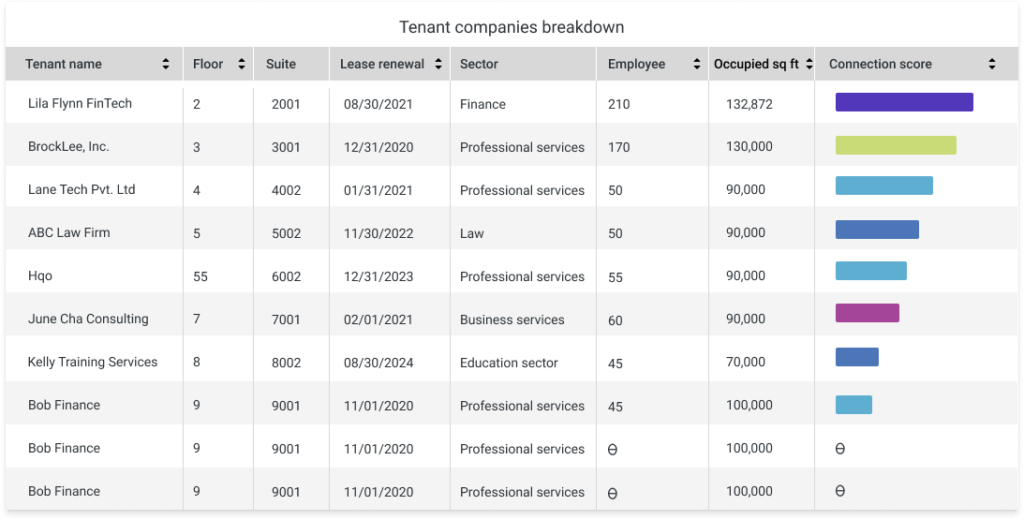
Adopting the right technology is not enough by itself; the CRE industry also requires what we refer to as an “art and science” approach to manage complexity and save customers valuable time. With over 8,000 proptech partners available on the market, landlords will need a trusted team of technology experts to help walk them through the implementation and management of various technology solutions, as well as to provide ongoing consultation and support to ensure faster innovations throughout any portfolio.
The combination of benchmarking and end-to-end solutions will ensure that landlords can efficiently organize their building data, while comparing it to a growing industry database of CRE insights that will accelerate best-in-class experiences for their tenants.
Not “on the Grid” just yet? Learn more about HqOS™ and schedule a demo today.
